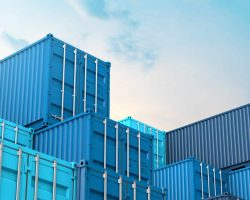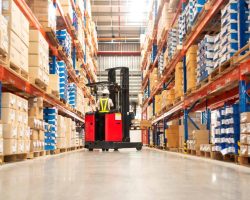 |
The congestion issues at intermodal rail hubs in eastern Canada are a direct result of drayage capacity shortages at those facilities, and there seems to be no relief in sight. The simple fact is there are fewer drivers in Toronto and Montreal to handle the volume, creating a serious backlog and ongoing congestion issues. On a year to date basis, total truck visits to these facilities declined by 18.5 percent, verifying the problem, which first surfaced in Toronto in May, and has now extended to Montreal.
As the cargo backlog increases at Toronto and Montreal railyards, additional charges, borne by shippers, are becoming more common and unavoidable. As volume levels into ports remain steady, terminal yards are regularly full, and reservations to return empty containers are not always available. The inability of terminals to accept empty equipment returns can lead to demurrage fees from the steamship lines and detention fees from drayage carriers that are holding the empty containers in their yards for several days or even weeks.
This backlog is leading to less chassis equipment being available to utilize for collecting full containers from the yards for deliveries, thus causing delays in deliveries and potentially leading to storage charges at the railyard as well.
Unfortunately, congestion in the rail system has been going on for weeks, and there is no clear end in sight. While some inland relief container yards are being utilized to clear backlogs and restore fluidity in the supply chain network, the ports, rail operators and drayage groups are all stretched to the limit, and it is unlikely that the system will unclog any time soon.
A lack of drayage capacity in Toronto and Montreal for receiving cargo from all Canadian ports of arrival is increasingly putting upstream pressure on these first points of arrival. As a result, rail dwell times are elevated at marine terminals and the inland movement of cargo is delayed considerably.
Cargo volumes this year highlight the fact that inland bottlenecks, not container volumes, are the cause of the ports’ woes. Vancouver’s container volume was down 13.7 percent in January through May compared to a year ago, according to the port. Prince Rupert data shows the port’s volume was only up 1 percent through the first five months of the year.
Because of the congestion at their inland facilities, the railroads are metering, or managing, how many trains they are deploying to ports such as Vancouver and Prince Rupert. This is causing rail containers to back up at the marine terminals because of reduced train capacity.
Although the whiplash effect of inland rail congestion on West Coast ports has been pervasive in the U.S. in the past year, it has not been a serious problem in Canada until recently.
Elevated dwell times because of delays in Toronto and Montreal, have also resulted in certain ports opening near-dock surge yards to hold containers for temporary storage. The idea behind this is to prevent rail congestion at the port from worsening, but it does not solve the problems which originate inland.
Neither the ports nor the railroads are ready to forecast a return to normal. The drayage and warehouse capacity constraints in Toronto and Montreal have become so chronic that we are now in a situation of a potential back up for some time, until this issue is resolved. In terms of solutions, a return to proper levels of drayage capacity is an obvious requirement and one hopes the drayage industry will react to this need accordingly. At the same time, inland rail terminals also must look to improve efficiencies, as these issues have compounded the situation as well.
For more information, contact David Lychek, Director – Ocean & Air Services.
















